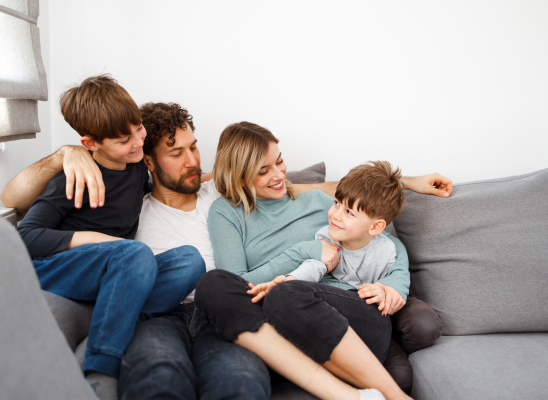Why Does Pulling Feel Good? The Brain's Reward System and Trichotillomania

Online test
Find out the severity of your symptoms with this free online test
Pulling your hair out hurts, right? Well, sometimes. Pulling one’s hair can also feel satisfying, even pleasurable, even if it leads to later distress. And therein lies the paradox of hair pulling.
For people living with hair pulling or “trich”, clinically known as trichotillomania, this paradox is at the heart of their daily experience. How can something so destructive feel so satisfying, even knowing that relief doesn’t last?
While we don’t fully understand trichotillomania, neuroscience suggests that certain aspects of brain structure and function play a key role in managing the urge to pull. Understanding the neuroscience behind these urges can be both validating and empowering. When it comes to your brain and trich, it isn’t about willpower or weakness. It’s about how our brains are wired to seek reward.
The Dopamine Connection
Dopamine is a powerful neurotransmitter often called the "feel-good" chemical and is a key factor in motivation, anticipation, and the brain's reward system. When we engage in a behavior that our brain perceives as rewarding, dopamine floods key reward pathways in the brain. What makes this complicated is that what the brain perceives as “pleasurable” can be quite broad, from the perfect bite of chocolate to a winning poker hand to hearing your favorite song. It’s that flood of dopamine that helps to reinforce the behavior.
So, what does this have to do with trich? A lot.
For someone with trich, the act of pulling can trigger this dopamine response, creating that brief sense of relief, satisfaction, or even pleasure. Through this neurological response, the brain essentially learns that pulling reduces tension or provides stimulation, reinforcing the behavior through this reward pathway. Over time, this creates a powerful loop that can be incredibly difficult to interrupt.
Why Pulling Can Feel So Good
The urge to pull often arises during moments of stress, boredom, or anxiety. In these states, the brain is searching for a way to regulate emotions or achieve a sense of calm.
Aside from the release of dopamine the act of pulling can activate sensory pathways, primarily touch pathways. The physical sensation of locating the "just right" hair, the anticipatory tension that comes just before pulling, and the relief afterwards all contribute to the experience. A 2025 study published in the Journal of Physiology found a significant connection between specialized nerve fibers called C-tactile (CT) afferents and hair follicles. These CT afferents not only communicate that a “touch” has happened, but they also send messages to parts of the brain that interpret that touch – the sensation and interpretation of touch. This connection may help explain why the sensation of hair pulling can feel so satisfying.
When Relief Turns to Distress
While the hair pulling may bring immediate relief, that sense of satisfaction is short lived, giving way to feelings of shame, embarrassment, or frustration. The problem is that the pain of this emotional aftermath isn’t enough to deter the hair pulling. In fact, it has the opposite effect and feeds the cycle of pulling. These painful feelings may trigger more pulling as the brain seeks out its source of relief again.
The recurring urges are not a reflection of character or willpower or self-control. The brain is simply responding to learned patterns of behavior. This immediate neurological reward will always feel more powerful than the delayed emotional consequence, which is why relying on willpower alone is rarely enough to manage trich.
What Can Help
Recognizing that hair pulling has a legitimate neurological basis can be incredibly empowering. It shifts the focus from "Why can't I just stop?" to "What can I do to help my brain meet its needs differently?” That shift is the foundation for creating effective treatment approaches like Habit Reversal Training (HRT) and others which work with the brain's reward system rather than against it. These evidence-based therapies help you identify triggers, develop awareness of your pulling, and create alternative behaviors that can satisfy the same neurological needs without the negative consequences.
If you or someone you love is struggling to understand and manage trich, Trichstop can help. We have a team of experienced therapists who can help you understand your hair pulling and find healthy ways of coping while helping your brain learn new ways to meet its need for relief or satisfaction. With proper support, understanding, and evidence-based treatment, you can take control of your hair pulling and find a path to healing.
References
1. Lewis, R. G., Florio, E., Punzo, D., & Borrelli, E. (2021). The Brain's Reward System in Health and Disease. Advances in experimental medicine and biology, 1344, 57–69. https://pmc.ncbi.nlm.nih.gov/articles/PMC8992377/
2. Grant, J.E., Peris, T.S., Ricketts, E.J. et al. Reward processing in trichotillomania and skin picking disorder. Brain Imaging and Behavior 16, 547–556 (2022). https://link.springer.com/article/10.1007/s11682-021-00533-5#citeas
3. Moore, W., Nikesjö, J., Bouchatta, O., Makdani, A. D., Hakizimana, P., Rousson, M., Duvernoy, B., McIntyre, S., Pehkonen, L. J., Fridberger, A., McGlone, F., Olausson, H., Nagi, S. S., & Marshall, A. (2025). Robust coupling between the C-tactile afferent and the hair follicle in humans. The Journal of physiology, 603(16), 4593–4608. https://pubmed.ncbi.nlm.nih.gov/40695359/
Online test
Find out the severity of your symptoms with this free online test
Start your journey with TrichStop
Take control of your life and find freedom from hair pulling through professional therapy and evidence-based behavioral techniques.
Start Now



